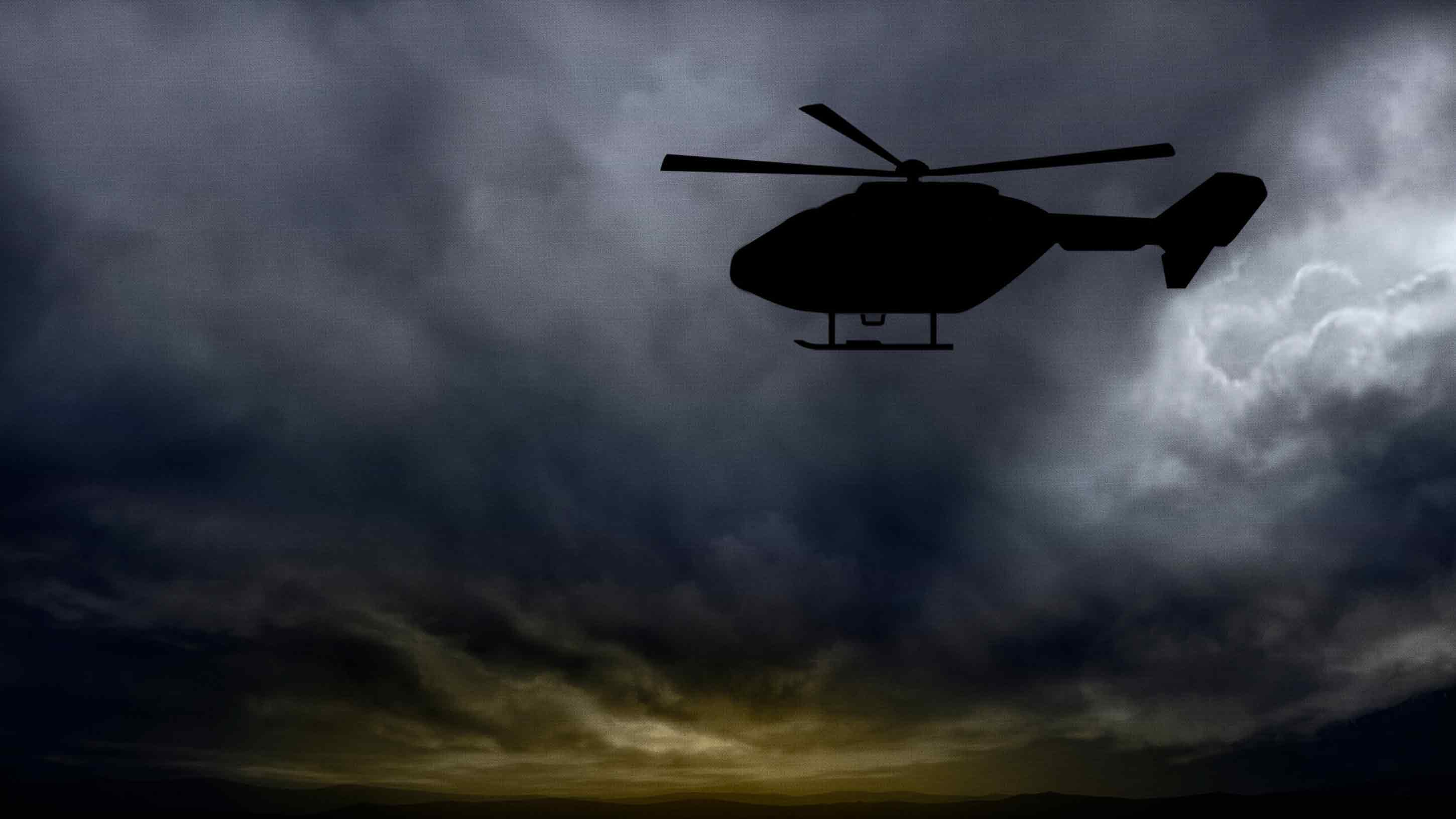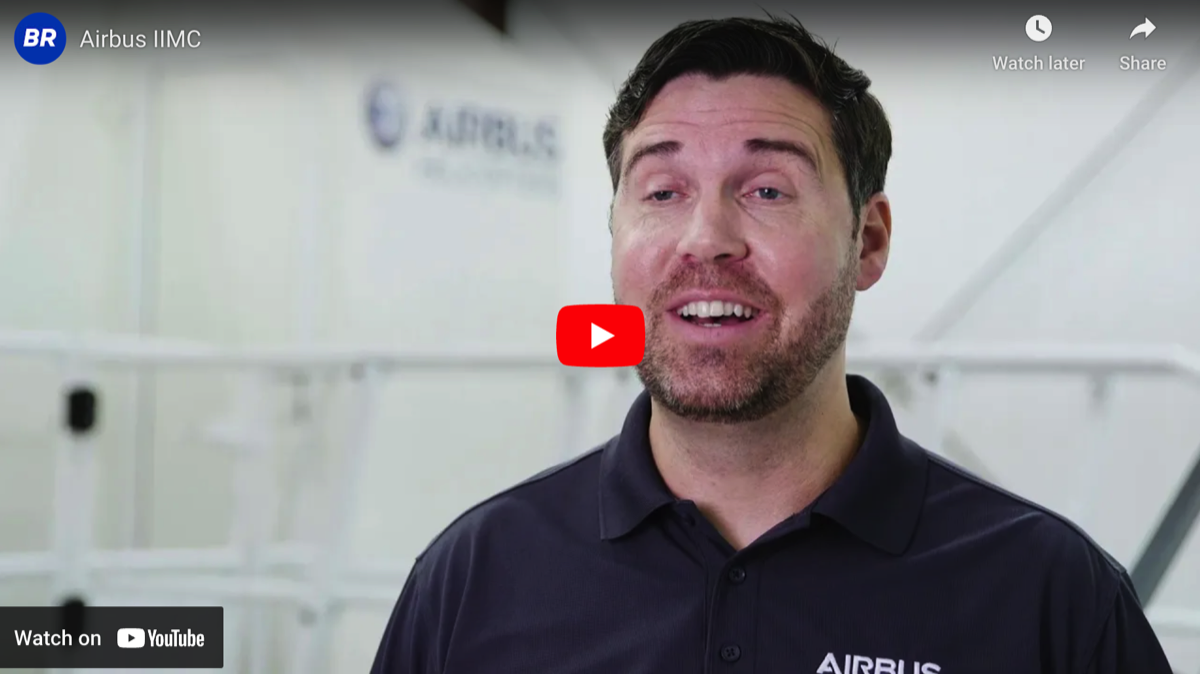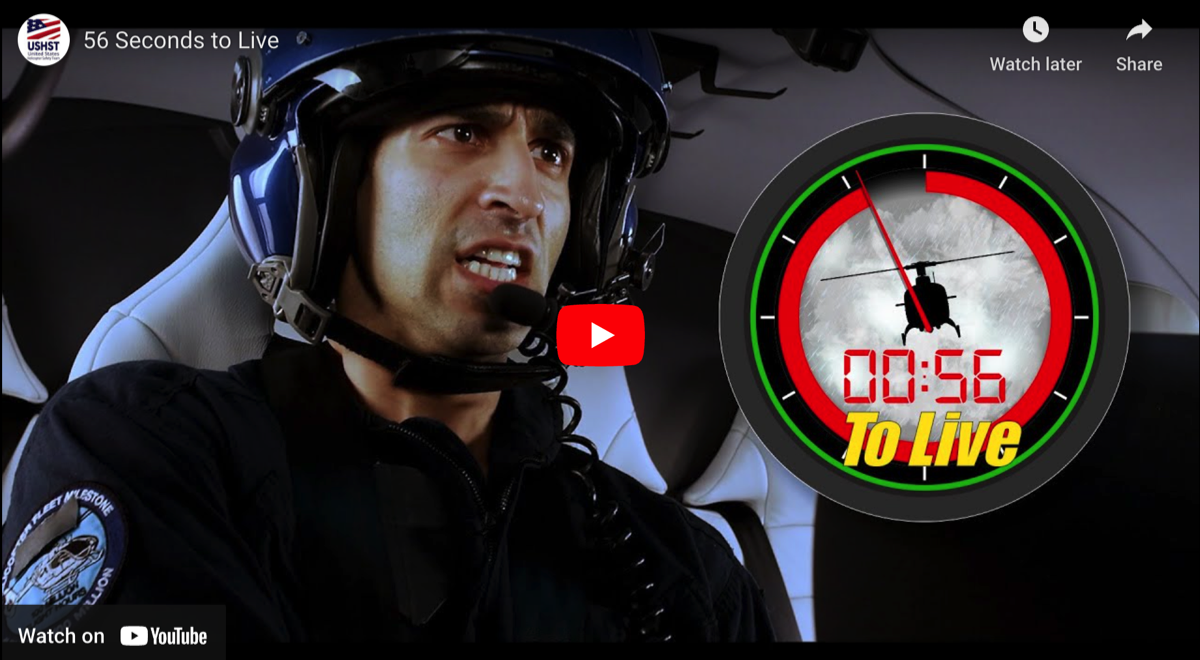

Helicopters into IFR/IMC Flight
(It doesn't have to end in tragedy, any more!)
Throughout aviation’s history, flying a helicopter “blind” into clouds, fog, smoke, dust, or snow/ice white out, (Instrument Meteorological Conditions (IMC), has been extremely dangerous, at best…
The worldwide statistical accident case reality is that you have somewhere between 30-180 seconds to live… (Sadly both Kobe Bryant/helicopter, and JFK Jr./ plane, precisely met this horrifying seconds to dying reality).
Background: This is a $100,000,000.00 dollar a year (one hundred million dollars a year) in lost aircraft problem. (To say nothing of the lives, families, communities, societies effected). Staggering. And it’s been here since the dawn of aviation.
(While this situation holds true for fixed wing pilots also, the issue is slightly less severe.) Both aircraft fatalities are prevalent, with or without Instrument Flight Rules (IFR) training.
We’re not talking about trivial pursuit. This is a very serious issue.
The Heli IFR/IMC/IIMC workload is so intense, that most countries don’t allow single pilot IFR helicopter operations at all.
Helicopter and many plane pilots get into trouble almost immediately flying into IMC conditions and lose the visible horizon. This can happen slowly (i.e., the frog in boiling water) or very quickly. Either way, it is nearly impossible for most pilots, even well trained, to know if they are flying straight, turning, ascending or descending.
The problem is so severe in clouds/fog/smoke that even qualified IFR rotary-wing pilots are often/usually going to die, quickly. So, while fixed wing plane pilots very often have these same issues, and while often disorientating and bad, they’re s not nearly as severe as their helo brothers/sisters, for reasons which will be discussed below...
In short, helicopters are inherently far less stable, (unstable in slow flight), and hanging on a gimbal.
For helicopter pilots, add to this power and telephone wires, terrain, obstacles. The problems are even more so compounded because helicopters spend far more time much closer to the ground leaving far less reaction time…than their fixed wing plane cousins. The problems are overwhelming.
Adding even more fuel to the fire, helicopter instruments are derived from and identical to (and completely unsuited to) those used in fixed-wing aircraft. These 2D existing instruments are ill suited, ill matched and unable to clearly project the helicopters orientation in 3D space to a pilot.
The problems start with a well known physiological condition variously termed “Spatial Disorientation” (Spatial-D), and Somatogravic/Somatogyral Illusions. About 80% of the spatial orientation input into our brains, is what we see with our eyes.
When a pilot loses visibility to the horizon, the brain reboots, and defaults to the middle ear for its orientation feedback. In short, this tri-vestibular “balance” system is far less than perfect, and due to simple physics, inherently gives erroneous (Coriolis effect) signals to the brain, which causes mixed signals, severe mental cognitive confusion and decision errors in most all pilots.
The “leans” is what pilots call it…Which typically leads to a high-speed spiral dive, straight into terrain. But what happens if we never lose sight of the horizon? The problems are completely mitigated and resolved before the middle ear/brain interference problems can begin.
With a HeliEZii instrument in the cockpit, the horizon is never lost. It’s always present, in front of the pilot. So, the Spatial-D/Somatogravic problem is avoided entirely and altogether, from the onset, because the pilot always has visibility and 3D reference to a level horizon. It is always there. Or, It’s never not there. Either way. The pilot never loses the normal visual cues of a clear day.
Believe it or not, this ability has never before been a part of aviation. Again, Believe it or Not; Aviation has never had this ability. It’s true.
HeliEZii is developing an entirely new class of 3D flight avionics dedicated to helicopters, not based on fixed-wing avionics from the past. Instruments that are completely intuitive to fly for Heli (and fixed wing) pilots and will require little to no training…
To be clear, HeliEZii systems will not and cannot replace traditional approved avionics by the FAA. (That would take an act of God). We are not replacing, rather we are augmenting with the HeliEZii flight system. (There is no magnetic/electrical signature to effect other instruments.) The 8-9 current FAA required instruments are, and will always continue to be required for all IFR/VFR flight operations.
The HeliEZii® systems are a visually and intuitively based add-on flight aides that offers a completely different and opposite perspective, mindset and viewpoint. The differences are extremely obvious.
Anyone can look at the HeliEZii instruments and immediately understand and know their in-air 3D orientation, and flight status. Then just do in flight what comes naturally. Any maintenance or corrective action required, are likewise immediately perceived, understood and obvious. This is how you stay alive.
This is not the case with traditional instruments in a helicopter.
The HeliEZii IFR/IMC instruments (HEZI2) does not resemble any other instrument currently flying and is completely independent of all other manufactures and flight systems. It is a complete and total rewrite from everything pilots have seen in any cockpit.
The promise is the end of Heli IFR/IMC/IIMC pilot overload and fatalities.
Why don’t standard IFR avionic flight instruments work in helicopters?
Let’s start with a few simple examples to illustrate the problem points. In an airplane, the artificial horizon /Attitude Indicator (AI) is directly pinned to the nose of the plane. Point the nose up (with a minimum airspeed), and the horizon indicator immediately points up, and the plane climbs.
Correspondingly, push the control yolk forward, to point the nose down, and the horizon indicates down, and the plane of course descends, no options.
But neither of these examples, pulling to go up or pushing to go down, necessarily hold true for helicopters. It is absolutely normal to point the nose up while descending, and the nose down while climbing.
In planes, there is only one control that operates this function, the yolk or stick. In helicopters there are two (three if you include power/throttle/torque).
From the helicopter’s perspective, the avionics are simply not capable of relating easily understood, easily synthesized data.
One last quick example to illustrate this point.
When in 0/0 visual IMC conditions (flying in a cloud, fog, smoke, etc.), the AI indicator is perhaps arguably the most important instrument pilots have to maintain level and controlled flight. Usually centered on most panels.
However, when compared to our normal daily perceptions, the way the AI displays information and works is actually the exact opposite and completely counter intuitive, of how our minds normally see and perceive the world. The AI is highly confusing. To explain…
1. The AI is supposed to be a two-dimensional (flat) representation of what we actually see in three dimensions. But is it?
When we look outside, our ground reference is always perceived and processed in our minds as level, and in three dimensions. Near/Far, Left/Right. There is a strong mental overload trying to process two dimensions when we consciously, subconsciously, and innately know and understand three dimensions.
2. In conflict, the AI on the other hand, shows the horizon/ground not as level, but rather banking in angles and up/down, while keeping the figure of the aircraft and wings level with the pilot. So, the AI horizon rotates and moves while the pilot’s perception stays “fixed,” relative to the aircraft.
Consider an identical situation in VFR good visibility, as we look out of the cockpit, we see and sense the “wings” moving while our brains tell us the horizon is stationary. Do You see the problem with AI?
Astonishingly, there has never been a flight instrument that shows a static level ground reference, which is how our minds perceive, process, and orient ourselves to our world. HeliEZii is the new paradigm shift in flight instruments.
Is it any wonder that so many pilots become confused and disoriented, and die? Kobe’s highly qualified pilot (and JFK Jr.) are the “norm” in entering this 0/0 visibility situation.
HeliEZii instruments on the other hand are what we call “OI©” (“Orientation Indicators”) not AI (Attitude Indicators. )
Ok, What are the real differences?
The differences are huge.
AI VS. OI©.
1. As previously shown, AI (and all current avionics), the artificial horizon instruments displays the Ground as rolling all around, up and down, like giant Hawaii ocean waves.
With HeliEZii OI© on the other hand, the ground reference always stays level (flat), while our orientation to it changes. This is the same and exactly how our minds work.
2. As you know, AI displays a flat 2D image. Approx. 90ºX90º degrees.
OI on the other hand shows a full global 3D, 360ºX360º of your Orientation in 3D space. Its obvious and clear, looks the same as the/our real world.
You don’t have to do (learn, train, drill, study, “stay current”, repeat again) anything different from how you’re already living.
Just do what you normally do. If you fall down, you Get UP and Stand UP (“GUPnSUP”). The same with HeliEZii. Just GET UP and STAND UP from the always level Ground Reference. Just Push the controls opposite away from the ground/horizon, exactly like you would push yourself off the ground to get up.
This is the instinctive way our brains work. We tend to flee and go away from danger not toward it.
Easy right?
But the opposite condition exists with current AI. And It really messes with our brains.
This is a likely explanation, while in 0/0 conditions, with no confirming visual cues, the physiological sensations from the middle ear, overwhelms and causes the brain to be in conflict with the instruments. It’s a paradigm shift the wrong way. The brain needs to grapple with while in a highly stressful and most often fatal situation.
HeliEZii again resolves this confusion problem by keeping the horizon fixed, as our brains naturally perceive it to be in daily life, and continually adjusts/moves the helicopter body and rotor reference, relative to the horizon.
Again, a paradigm shift (the right way) in how future flight instruments will operate.
These examples illustrate that contradictory, conflicting, and often confusing instrument information is presented to helicopter pilots.
Imagine the complexity for more difficult maneuvers, climbing/descending turns, banks, etc.
How does this contrast with what the eyes and mind sees, understands, and interprets, and compensates in VFR conditions?
This is the critical question. If we are able to completely mimic and imitate the brains input of VFR flight even in 0/0, zero visibility at ground level, IMC conditions, necessary to avoid any confusion or “brain freeze” processing delays.
In VFR conditions, when the helicopter tilts/pitches forward nose down into translational lift, the pilot’s head automatically looks UP to compensate for what he/she sees… This is not possible for an artificial horizon to duplicate, confusing and freezing the pilot’s mind.
HOW is this immediately visually and intuitively indicated to the pilots?
The whole body of the displayed helicopter changes color to indicate a climbing accent or descent. Along with an UP arrow above and a down arrow below… providing multiple intuitive, no confusion visual cues whether the helicopter is climbing or descending. The pilots mind assimilates and absorbs the HeliEZii instruments display seamlessly, without any interpretation, conflicts, or sensory friction, just what we normally see every day.
The rotor similarly is segmented and changes colors to indicate up and down attitudes.
Surrounding the helicopter, a moving foreground “hologram” of lined grids is rotated left and right, up and down, forward and backward. The horizontal and vertical lines provide further turn/bank situational awareness and speed indicators that correspond to the color changes of the helicopter body and rotation disk.
Being completely independent of, and not tied to any other instruments offers numerous benefits. Autonomy, redundancy, back up, etc.…
How did the concepts of HeliEZii.com begin?
About twenty-five years ago, in the mid 1990’s, HeliEZii founder, Mark D. Goodley, was flying the valleys of California a few times per month. Anyone familiar with the area knows how the fog dominates the weather forecasts most times of the year. Hard rock up to 14,500 ft on both sides of the valleys affected the flying. Many of the airports he was flying to were customer owned without IFR controls, routes, or procedures. He was on his own.
He needed a solution. This is the 1990’s, before there were GPS’s or moving maps available in any cockpit. No commercial 3d terrain instruments were to be found.
So with an early 1st generation color PC laptop, a first generation Garmin 195 black and white gps receiver, and a program based upon the US Geological Elevation maps, Mark went to work… Built a solid laptop mount in plane, Garmin was securely mounted to a yolk mount, and he was in business with a full 12” display. It was beautiful and worked incredibly well.
He was perfectly safe flying in any conditions, (as long as the GPS signal held…. it never failed). Mark learned and utilized the benefits of having a real-time vertical 3D terrain avoidance system beside him in the cockpit, before they were commercially available.
In summary, HeliEZii for helicopters adds a visually intuitive, clear and obvious 3D helicopter orientation tool. Add to this scenario a surrounding moving hologram lined grid to indicate speed and confirm orientation…. Instinctively you can see where you’re at, in even 0/0 IMC flight conditions…something impossible with today’s flight instrumentation.
This is what Helicopter aviation has always needed. Now it’s soon here.
For additional confirmation and clarity, please see the videos below.
Helicopters into IFR/IMC Flight
(It doesn't have to end in tragedy!)
Throughout aviation’s history, flying a helicopter “blinded” into a cloud, fog, smoke, dust, or snow/ice white out, (Instrument Meteorological Conditions (IMC), has been extremely dangerous at best, and near immediate death for most, roughly 99%… (This is true, less severely, for fixed wing plane pilots also). All with or without Instrument Flight Rules (IFR) training.
The worldwide statistical accident case reality is that you have somewhere between 30-180 seconds to live… (Sadly aka Kobe Bryant, JFK Jr., et al., precisely met this horrifying reality).
Background: This is a $100,000,000.00 dollar a year (one hundred million dollars a year) in lost aircraft problem. (To say nothing of the lives, families, communities, societies effected). Staggering. And it’s been here since the dawn of aviation.
We’re not talking about trivial pursuit. This is a very serious issue.
The Heli IFR/IMC/IIMC workload is so intense, that most countries don’t allow single pilot IFR helicopter operations at all.
Helicopter and many plane pilots get into trouble almost immediately flying into IMC conditions and lose the visible horizon. This can happen slowly (i.e., the frog in boiling water) or very quickly. Either way, it is nearly impossible for most pilots, even well trained, to know if they are flying straight, turning, ascending or descending.
The problem is so severe in clouds/fog/smoke that even qualified IFR rotary-wing pilots are often/usually going to die, quickly.
So, while fixed wing plane pilots very often have these same issues, and while often disorientating and bad, they’re s not nearly as severe as their helo brothers/sisters, for reasons which will be discussed below... .
In short, helicopters are inherently far less stable, (unstable in slow flight), and hanging on a gimbal.
For helicopter pilots, add to this power and telephone wires, terrain, obstacles. The problems are even more so compounded because helicopters spend far more time much closer to the ground leaving far less reaction time…than their fixed wing plane cousins. The problems are overwhelming.
Adding even more fuel to the fire, helicopter instruments are derived from and identical to (and completely unsuited to) those used in fixed-wing aircraft. These 2D existing instruments are ill suited, ill matched and unable to clearly project the helicopters orientation in 3D space to a pilot.
The problems start with a physiological condition termed Spatial Disorientation (Spacial-D). About 80% of the spatial orientation input to our brains, is what we see with our eyes. When a pilot loses the visibility to the horizon, the brain reboots, and falls back on the middle ear for its orientation feedback. In short, this tri-vestibular “balance” system is far less than perfect, and due to simple physics, inherently gives erroneous (Coriolis effect) signals to the brain, which causes mixed signals mental confusion and errors in most all pilots. The “leans” is what pilots call it…Which almost invariably leads to a high-speed spiral dive straight into terrain.
But what happens if we never lose sight of the horizon? The problems are mitigated and resolved before the middle ear/brain interference problems can begin.
With HeliEZii, the horizon is never lost. It’s always present in the cockpit, in front of the pilot. So, the Spatial-D problem is avoided entirely and altogether, from the onset, because the pilot always has visibility and 3D reference to a level horizon. It is always there. Or, It’s never not there. Either way. The pilot never loses the normal visual cues of a clear day.
Believe it or not, this ability has never before been a part of aviation. Again, Believe it or Not; Aviation has never had this ability. It’s true.
HeliEZii is developing an entirely new class of 3D flight avionics dedicated to helicopters, not based on fixed-wing avionics from the past. Instruments that are completely intuitive to fly for Heli (and fixed wing) pilots and will require little to no training…
To be clear, HeliEZii systems will not and cannot replace traditional approved avionics by the FAA. (That would take an act of God). We are not replacing, rather we are augmenting with the HeliEZii flight system. (There is no magnetic/electrical signature to effect other instruments.) The 8-9 current FAA required instruments are, and will always continue to be required for all IFR/VFR flight operations.
The HeliEZii® systems are a visually and intuitively based add-on flight aides that offers a completely different and opposite perspective, mindset and viewpoint. The differences are extremely obvious.
Anyone can look at the HeliEZii instruments and immediately understand and know their in-air 3D orientation, and flight status. Then just do in flight what comes naturally. Any maintenance or corrective action required, are likewise immediately perceived, understood and obvious. This is how you stay alive.
This is not the case with traditional instruments in a helicopter.
The HeliEZii IFR/IMC instruments (HEZI2) does not resemble any other instrument currently flying and is completely independent of all other manufactures and flight systems. It is a complete and total rewrite from everything pilots have seen in any cockpit.
The promise is the end of Heli IFR/IMC/IIMC pilot overload and fatalities.
Why don’t standard IFR avionic flight instruments work in helicopters?
Let’s start with a few simple examples to illustrate the problem points.
In an airplane, the artificial horizon /Attitude Indicator (AI) is directly pinned to the nose of the plane. Point the nose up (with a minimum airspeed), and the horizon indicator immediately points up, and the plane climbs.
Correspondingly, push the control yolk forward, to point the nose down, and the horizon indicates down, and the plane of course descends, no options.
But neither of these examples, pulling to go up or pushing to go down, necessarily hold true for helicopters. It is absolutely normal to point the nose up while descending, and the nose down while climbing.
In planes, there is only one control that operates this function, the yolk or stick. In helicopters there are two (three if you include power/throttle/torque).
From the helicopter’s perspective, the avionics are simply not capable of relating easily understood, easily synthesized data.
One last quick example to illustrate this point.
When in 0/0 visual IMC conditions (flying in a cloud, fog, smoke, etc.), the AI indicator is perhaps arguably the most important instrument pilots have to maintain level and controlled flight. Usually centered on most panels.
However, when compared to our normal daily perceptions, the way the AI displays information and works is actually the exact opposite and completely counter intuitive, of how our minds normally see and perceive the world. The AI is highly confusing. To explain…
1. The AI is supposed to be a two-dimensional (flat) representation of what we actually see in three dimensions. But is it?
When we look outside, our ground reference is always perceived and processed in our minds as level, and in three dimensions. Near/Far, Left/Right. There is a strong mental overload trying to process two dimensions when we consciously, subconsciously, and innately know and understand three dimensions.
2. In conflict, the AI on the other hand, shows the horizon/ground not as level, but rather banking in angles and up/down, while keeping the figure of the aircraft and wings level with the pilot. So, the AI horizon rotates and moves while the pilot’s perception stays “fixed,” relative to the aircraft.
Consider an identical situation in VFR good visibility, as we look out of the cockpit, we see and sense the “wings” moving while our brains tell us the horizon is stationary. Do You see the problem with AI?
Astonishingly, there has never been a flight instrument that shows a static level ground reference, which is how our minds perceive, process, and orient ourselves to our world. HeliEZii is the new paradigm shift in flight instruments.
Is it any wonder that so many pilots become confused and disoriented, and die? Kobe’s highly qualified pilot (and JFK Jr.) are the “norm” in entering this 0/0 visibility situation.
HeliEZii instruments on the other hand are what we call “OI©” (“Orientation Indicators”) not AI (Attitude Indicators.)
Ok, What are the real differences?
The differences are huge.
AI VS. OI©.
1. As previously shown, AI (and all current avionics), the artificial horizon instruments displays the Ground as rolling all around, up and down, like giant Hawaii ocean waves.
With HeliEZii OI© on the other hand, the ground reference always stays level (flat), while our orientation to it changes. This is the same and exactly how our minds work.
2. As you know, AI displays a flat 2D image. Approx. 90ºX90º degrees.
OI on the other hand shows a full global 3D, 360ºX360º of your Orientation in 3D space. Its obvious and clear, looks the same as the/our real world.
You don’t have to do (learn, train, drill, study, “stay current”, repeat again) anything different from how you’re already living.
Just do what you normally do. If you fall down, you Get UP and Stand UP (“GUPnSUP”). The same with HeliEZii. Just GET UP and STAND UP from the always level Ground Reference. Just Push the controls opposite away from the ground/horizon, exactly like you would push yourself off the ground to get up.
This is the instinctive way our brains work. We tend to flee and go away from danger not toward it.
Easy right?
But the opposite condition exists with current AI. And It really messes with our brains.
This is a likely explanation, while in 0/0 conditions, with no confirming visual cues, the physiological sensations from the middle ear, overwhelms and causes the brain to be in conflict with the instruments. It’s a paradigm shift the wrong way. The brain needs to grapple with while in a highly stressful and most often fatal situation.
HeliEZii again resolves this confusion problem by keeping the horizon fixed, as our brains naturally perceive it to be in daily life, and continually adjusts/moves the helicopter body and rotor reference, relative to the horizon.
Again, a paradigm shift (the right way) in how future flight instruments will operate.
These examples illustrate that contradictory, conflicting, and often confusing instrument information is presented to helicopter pilots.
Imagine the complexity for more difficult maneuvers, climbing/descending turns, banks, etc.
How does this contrast with what the eyes and mind sees, understands, and interprets, and compensates in VFR conditions?
This is the critical question. If we are able to completely mimic and imitate the brains input of VFR flight even in 0/0, zero visibility at ground level, IMC conditions, necessary to avoid any confusion or “brain freeze” processing delays.
In VFR conditions, when the helicopter tilts/pitches forward nose down into translational lift, the pilot’s head automatically looks UP to compensate for what he/she sees… This is not possible for an artificial horizon to duplicate, confusing and freezing the pilot’s mind.
HOW is this immediately visually and intuitively indicated to the pilots?
The whole body of the displayed helicopter changes color to indicate a climbing accent or descent. Along with an UP arrow above and a down arrow below… providing multiple intuitive, no confusion visual cues whether the helicopter is climbing or descending. The pilots mind assimilates and absorbs the HeliEZii instruments display seamlessly, without any interpretation, conflicts, or sensory friction, just what we normally see every day.
The rotor similarly is segmented and changes colors to indicate up and down attitudes.
Surrounding the helicopter, a moving foreground “hologram” of lined grids is rotated left and right, up and down, forward and backward. The horizontal and vertical lines provide further turn/bank situational awareness and speed indicators that correspond to the color changes of the helicopter body and rotation disk.
Being completely independent of, and not tied to any other instruments offers numerous benefits. Autonomy, redundancy, back up, etc.…
How did the concepts of HeliEZii.com begin?
About twenty-five years ago, in the mid 1990’s, HeliEZii founder, Mark D. Goodley, was flying the valleys of California a few times per month. Anyone familiar with the area knows how the fog dominates the weather forecasts most times of the year. Hard rock up to 14,500 ft on both sides of the valleys affected the flying. Many of the airports he was flying to were customer owned without IFR controls, routes, or procedures. He was on his own.
He needed a solution. This is the 1990’s, before there were GPS’s or moving maps available in any cockpit. No commercial 3d terrain instruments were to be found.
So with an early 1st generation color PC laptop, a first generation Garmin 195 black and white gps receiver, and a program based upon the US Geological Elevation maps, Mark went to work… Built a solid laptop mount in plane, Garmin was securely mounted to a yolk mount, and he was in business with a full 12” display. It was beautiful and worked incredibly well.
He was perfectly safe flying in any conditions, (as long as the GPS signal held…. it never failed). Mark learned and utilized the benefits of having a real-time vertical 3D terrain avoidance system beside him in the cockpit, before they were commercially available.
In summary, HeliEZii for helicopters adds a visually intuitive, clear and obvious 3D helicopter orientation tool. Add to this scenario a surrounding moving hologram lined grid to indicate speed and confirm orientation…. Instinctively you can see where you’re at, in even 0/0 IMC flight conditions…something impossible with today’s flight instrumentation.
This is what Helicopter aviation has always needed. Now it’s soon here.
For additional confirmation and clarity, please see the videos below
HELIEZI2 - IFR/IMC OI© 3D Flight Instruments
HeliEZii (intuitive IFR) with OI©



Caution!
The following video has disturbing matter.
Lives were lost. View at your own "risk."

For more information, contact:
Mark Goodley; (840) 999-2629
Or use the form below to email inquiries